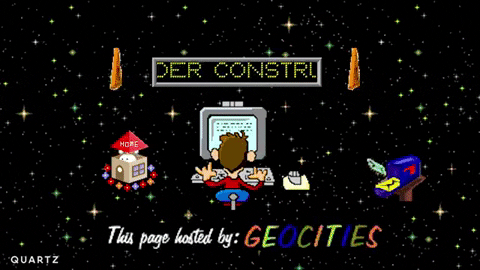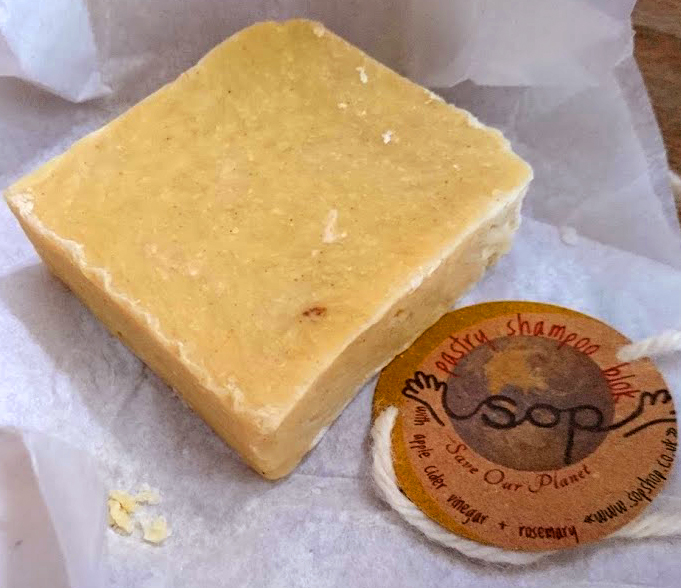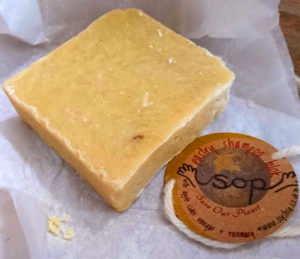Below is a paper by Danny Birchall and I that we wrote in 2012 about our work with games at Wellcome, and what we’d learned along the way. It was written just before I left, and so it felt like a nice wrapping up of what was a long and interesting process. It was only published in print, though, and I asked permission to post it online, which they granted as long as I waited 6 months. It’s been more like 18 months, but anyway, here goes. I hope it’s interesting and useful to anyone thinking about how they could use games as an engagement or learning tool, or to reach millions of people.
Reaching a new audience through gaming
Martha Henson and Danny Birchall
This article first appeared in Henry Stewart Publications 2047-1300 (2013) Vol. 1, 4 351–356 Journal of Digital Media Management 351
Wellcome Collection is an unusual public venue, based on the Euston Road in London. It is part of the Wellcome Trust, which was founded in 1936 according to the wishes of Sir Henry Wellcome, a biomedical entrepreneur and fanatical collector, as expressed in his will. The aims of the trust are to improve animal and human health, largely through funding biomedical research, but they also have an interest in public engagement with science. This is where Wellcome Collection comes in.
Together with a very fine medical library, the building houses two permanent exhibitions. One displays a small fraction of Henry Wellcome’s original collection of artefacts loosely connected in some way to health, but with this remit interpreted in such a broad way as to include items such as Charles Darwin’s walking stick, a chastity belt, prosthetics, surgical instruments and a Peruvian mummified corpse. The other looks at more modern medical concerns such as genetics and obesity through art and objects such as sequencing machines and diet books. There are also temporary exhibitions and events that deal with a wide range of topics related to life, medicine and science. The most recent, Superhuman, challenged ideas about what constitutes human enhancement, while the next one, Death, will tackle the emotive but endlessly fascinating subject after which it has been named.
The tone of all of this is very much non-didactic: the aim is to engage visitors with ideas, ethics, history and science in a thought-provoking way rather than merely to convey factual information. This approach also underpinned our thinking when it came to games: they had to be genuinely fun and engaging, and the factual content had to be embedded in a meaningful way. The idea was that people should have their curiosity and interest piqued by playing, not feel like they had received a thinly disguised lecture with a game mechanic crudely stuck on to it. It was also felt that the diverse subject matter that Wellcome Collection covers, combined with resources such as the image library and archives, had the potential to form the basis of really great original games.
But why games? First, a well-constructed game can be an incredibly engaging experience. Even those who do not consider themselves gamers will likely recognise the feeling of losing hours to playing Solitaire or Tetris on their computer, or perhaps Angry Birds on their phone. This state of ‘flow’, as it is known, is deep engagement and it is hard to think of many other activities that create this.
In addition, play is, in and of itself, all about learning. One must learn to progress in any game and there is no reason why this learning cannot also be factual. Furthermore, ‘people who play games’ constitute a huge audience, spread all over the world and yet using the same platforms and devices, all brought together by their desire to play. Reaching this audience, one that probably would not otherwise be aware of or be able to come to Wellcome Collection, was a significant reason for choosing this particular route — not because the aim was to convert those players into visitors, but to widen the reach of Wellcome’s activities.
THE GAMES AND THE PROCESS
We started relatively simply. The first couple of games were based on existing successful and enduring game mechanics that it was thought tallied particularly well with the museum’s content. We worked with an agency called Smile Your Eyes Off to create an online Flash game called Memory, which used the old game of Pelmanism as a basis. In this game, the player must turn over two matching cards to clear them away, the aim being to clear all the cards presented (1). The difference in this game is that all the card faces have pictures from Wellcome Images, a vast and varied picture library that contains both historical and contemporary images (2)
Having different themed levels made it possible to convey the breadth of the collection, with around 30 themes available for ten levels, such as masks, skeletons, cells and advertising. The levels also get increasingly difficult as the images get more numerous and more similar. For example, at the end of the game, the player might be unlucky enough to get the forceps level, which is not only very difficult but also very representative of Henry Wellcome’s habit of collecting a large amount of the same type of object.
It was a good starting point — the game was not too complicated and we got to know the process for making games. We found that collaboration was particularly important, it could not have been done without the involvement of image researchers in Wellcome Images and we worked closely with the developers. This spirit of collaboration was to inform the process for future games as well. The game was placed on the Wellcome Collection website, and continues to attract players, with around 60,000 views since launch.
The next project was a quiz engine that allowed the creation of multiple choice quizzes that could bring in images, audio and video in both question and answer (3). This was not particularly original, but was very useful and perhaps most notable for being our first collaboration with Preloaded, an award-winning games agency who focus on ‘games with purpose’ (4). Soon after the quiz engine project, an opportunity came up to do something a bit different and we turned again to Preloaded to help realise the idea.
In the winter of 2010–2011, Wellcome Collection held an exhibition called High Society, which looked at the history of drug use. One small part of the exhibition dealt with the Opium Wars, a shameful episode in the history of the British Empire in which opium was smuggled into China by the British, in order to raise funds to buy tea. It is a fascinatingly murky and under-discussed period of history, but it also has at its heart a central trading mechanic: buy opium; sell opium; buy tea. It was this mechanic that became the basis for High Tea.
In High Tea, one plays as a British trader, attempting to buy and sell opium at a good price and make enough money to keep the people back in Britain in tea (5). The player must avoid getting their ship impounded by the Chinese authorities, who are very much against this trade. The game starts in 1830 and ends in 1839, if the player survives that long, at which point they are informed how many Chinese people are now addicted to opium because of their actions and also that the result of this trade was the First Opium War, which ended rather badly for the Chinese.
Again, collaboration was very important to making High Tea work. It is a controversial subject and it was important to make sure that it was factually accurate. Fortunately, one of the curators of the High Society exhibition, author Mike Jay, was involved from the start. He helped make sure that the facts and names were right, but more than that, he worked with US and Preloaded to develop the fundamental concept, which came out of a brainstorming discussion about the subject matter.
THE SUCCESS OF HIGH TEA AND EVALUATING IT
Preloaded’s distribution strategy for online casual games is to build the game to be self-contained and therefore easy to download and ‘rip’ to other sites (6). At the same time, the company also makes it easily trackable. This means that the game can be placed anywhere and one can still see the play statistics and information, in this case using Google Analytics. The game is then seeded to major portals such as Kongregate, Newgrounds and Armor games, from which, if it shows any promise, it will be immediately ripped to tens if not hundreds of other games sites around the world. On occasion they will ask permission, but usually not. This is what happened to High Tea when it was launched in at the beginning of February 2011.
Initially, a goal was set of around 100,000 plays in the first few months, but this was exceeded in just one day. The game got high star ratings, was featured on the front pages of all the big portals to which it had been, was ripped to around 70 more on the first day and hundreds of comments were left by players. This ‘opening weekend’ was beyond all expectations. After a few days the game left the front pages and plays dropped off, although still to a consistent few thousand plays per day, which continues to this day. To date, it has had over 4 million plays (7).
Why was it so successful? What did the players make of it and the unusual subject matter? Some clues could be found from the analytics. We could see that the distribution strategy had worked and that over 50 per cent of plays were on sites that had ripped the game. Around 47 per cent of plays were on the officially seeded portals and only 3 per cent were on the Wellcome Collection site.
We also saw that social media had driven very little traffic, although share links were placed for Twitter and Facebook in the game. It was therefore fortunate that we had not relied on putting it on its own site and hoping it would ‘go viral’ over social media. We also looked at the Google Trends results for searches for ‘opium wars’ over several months before and after the game was launched. There is indeed a spike that corresponds with the game, but does not appear to have any other news event associated.
Although this is all very circumstantial, a survey that was put up with the game suggested that the game was inspiring people to do more of their own research on the topic. While the analytics are interesting, they often raise more questions than they answer and a more qualitative approach is necessary to find out more. Collaborating again with another department within the Wellcome Trust that specialises in evaluation, a plan was formulated to do this.
First, players were asked to answer a series of questions not only about the gameplay and about themselves, but also about their learning from the game and how they felt about the British Empire after playing it. Based on the answers from this, an interview script was devised and was followed up with seven players in depth over the phone and in a small focus group.
The results were illuminating. The most pleasing result from the survey was that over 50 per cent of players said they were likely to go on to find out more about the subject under their own steam. This was mostly via internet searches, but one player even said that they had read a book about Chinese history as a result. This was a huge success. As the aim had been for the games to engage rather than didactically educate, to generate interest rather than lecture, this measure seems to demonstrate that this had been achieved. Players were asked whether they knew much about the Opium Wars before playing and how the game had affected how they felt about the British Empire. Over 60 per cent were already aware of this history, but in the interviews most said they felt they had learnt something from playing.
Surprisingly, given how shocking it was felt that the actions of the British Empire were, around 57 per cent of surveyed players felt the same about it after playing and around 10 per cent even felt more positively. This indicated poor survey design as there was no baseline to judge any change in opinion from before the game. As such, this was explored further in the telephone interviews. It turned out that players who felt more positively towards the British Empire did so because the game allowed them to empathise with the traders involved by putting them in their shoes. They felt that their decision making was purely economic — they were just trying to put food on the table and were at enough of a remove from the trade’s impact to make ethical factors seem very distant. It was not that players were condoning their behaviour, but understanding it made them more sympathetic. This was very interesting, that even such a simple map-based game could engender feelings of empathy towards characters in it.
The final avenue for evaluation was the commentary left by players on the games portals — many hundreds not only across all the sites on which it was played, but also in blog posts about and reviews of the game (and even comments on those articles), on social media, in YouTube walkthroughs and sites like Metafilter and Reddit. What makes this particularly interesting (although harder to analyse) is that one has no control over it and it can make for unexpected reading. For example, some commentators discussed the maths or economics of the game, not something that had been particularly considered while developing it.
Many commented on the gameplay, which they largely enjoyed, but frequently had suggestions for improving (multiplayer or sandbox modes, ability to buy more boats and so on). A significant number discussed the content in some depth and the commentary was often quite thoughtful and measured. A tiny number, many less than had been thought, took issue with Wellcome Collection supposedly glorifying the actions of the British by making it fun to play.
It was a deliberate aim to try to keep the game fairly neutral in tone to let players make up their own mind, up until the slightly over-the-top results at the end showing the millions of Chinese people the player has caused to be addicted to opium. We had worried that this would be misinterpreted as a pro British Empire game, but most people understood that this was not what was going on here.
In terms of the player demographics, an international audience had indeed been reached, with a large proportion of players not only in North America, but also all over Europe and a large chunk in Brazil. The age range was wide, but more focused on 16–24 year olds than other age ranges, which is a younger audience than is usual for Wellcome Collection activities. One disappointment was a 90 per cent male skew, according to the survey, despite female players liking the game equally well. This is probably a disadvantage of targeting these online portals, which have a mostly male demographic. We are is looking at ways to rectify this for future games, perhaps by including mobile platforms, which have a more even gender split.
WHAT NEXT?
This year has seen production of two very different projects, Axon and Magic In Modern London. Following the success of High Tea, the winning formula was repeated for online casual Flash games with a game about neuroscience inspired by the exhibition Brains. As before, we collaborated with Preloaded, the exhibition curator, who this time was Marius Kwint from the University of Portsmouth, and another domain expert, neurobiologist Richard Wingate from Kings College London.
There was a fruitful day-long session of learning and discussion, during which Richard Wingate gave a crash course in neuroscience and Preloaded in game design. We were looking in particular for some rules within the brain science field that could be turned into the rules of a game. A key moment was when Richard showed a video he had created of neurons growing in a foetal chicken brain (this video can now be seen in the game itself). The neurons are growing towards protein targets and are also competing with other neurons to make the best connections and survive. This mechanic, along with the ‘brainbow’ style aesthetic of bright neurons on a dark background, became Axon (8).
The distribution strategy was more or less identical to that of High Tea and it again met with huge success. As before, we were keen to find out more about players reactions and surveyed them. Although the evaluation is not yet finished and the telephone interviews have not been started, it has been found that over 76 per cent of players learned something from playing the game and, again, a large proportion were moved to go and do their own research after playing.
Magic in Modern London is a very different and much more experimental project (9). It was inspired by a recent exhibition at Wellcome Collection in which an artist, Felicity Powell, took hundreds of amulets and incorporated them into her own work. The amulets, now in the Pitt Rivers collection, were originally collected by folklorist Edward Lovett in the early 20th century. Lovett wrote a book, Magic in Modern London, in which he told the stories that came with the amulets, which were bought or cajoled off ordinary Londoners (10).
This time, the subject matter suggested a different approach. As the amulets were collected around London, the idea of a treasure hunt around the city, where the player ‘collected’ the amulets themselves, seemed natural, and the obvious platform seemed to be mobile. As it happened, an agency called Amblr was building a platform that used GPS to trigger audiovisual content, which was used to great effect in an app called Hackey Hear (11).
In the Magic and Modern London app, the user navigates a 1908 map, overlaid on modern London, to find ‘areas of enchantment’ and collect the amulet at their centre. The aim is to assist an elderly and ailing Lovett to reassemble his collection and the stories that go with it. Once in an area of enchantment, music, imagery and voiceover lead the player to the amulet. Finding the amulet in question will unlock a reading from the book or inspired by the book related to each amulet.
The app has only just been released, although an evaluation will be carried out in the same manner as with the other games. As this is in many ways a more complicated and involved experience for the player, it will be very interesting to see how the platform affects distribution and what players make of it.
WHAT HAS BEEN LEARNED?
As we hope is clear, this has been journey of discovery, during which we have been both surprised and delighted by what has been found. The success with reaching and engaging a new audience could be put down to a number of key factors.
Collaboration has obviously been important, as has the distribution strategy. Picking subject matter that was both intriguing and also lent itself to a game was crucial, as was making sure that the factual content was fully embedded in the game mechanic. Working with people who know how to make fun games is hugely important, as is testing them throughout development to make sure they are well balanced. Evaluation is vital, there are many simple methods available to check what players are learning from a game or how they are reacting to it and it is perhaps the most interesting part of the process.
References
1. Wellcome Collection (undated) ‘Memory’, available at: http://www.wellcomecollection.org/interactives/memory/ (accessed 6th November, 2012).
2. Wellcome Images (undated) ‘Wellcome Images’, available at: http://images.wellcome.ac.uk/ (accessed 6th November, 2012).
3. Wellcome Collection (undated) ‘High Society Quiz’, available at: http://www.wellcome collection.org/whats-on/exhibitions/high-society/quiz.aspx (accessed 6th November, 2012),
4. Preloaded (2013) ‘Preloaded’, available at: http://preloaded.com/ (accessed 6th November, 2012).
5. Wellcome Collection (undated) ‘High Tea’, available at: http://hightea.wellcomeapps.com/ (accessed 6th November, 2012).
6. Stuart, P. (2010) ‘How we publish an online game’, available at: http://preloaded.com/blog/2010/08/16/how-we-publish-an-online-game/ (accessed 5th May, 2011).
7. Birchall, D. and Henson, M. (2011) ‘High Tea Evaluation Report’, available at: http://museumgames.pbworks.com/w/file/fetch/44614076/HighTeaEvaluationReport.pdf (accessed 15th January, 2013).
8. Wellcome Collection (undated) ‘Axon’, available at: http://axon.wellcomeapps.com/ (accessed 6th November, 2012).
9. Wellcome Collection (undated) ‘Magic in Modern London’, available at: http://www.wellcome collection.org/explore/play/magic-in-modern-london.aspx (accessed 6th November, 2012).
10. Lovett, E. (1925) ‘Magic in Modern London’, printed at the Advertiser offices.
11. Hackney Hear (undated) ‘Hackney Hear’, available at: http://www.hackneyhear.com/ (accessed 6th November, 2012).
Henson and Birchall
356 Journal of Digital Media Management Vol. 1, 4 351–356 [1] Henry Stewart Publications 2047-1300 (2013)




